A note in the Oracle Docs under the multianewarray instruction says:
It may be more efficient to use newarray or anewarray (§newarray, §anewarray) when creating an array of a single dimension.
Further:
newArray benchmark uses multianewarray bytecode instruction.
newArray2 benchmark uses anewarray bytecode instruction.
And that is what makes a difference. Let's see the statistics obtained using the perf Linux profiler.
For the newArray benchmark the hottest methods after inlining are:
....[Hottest Methods (after inlining)]..............................................................
22.58% libjvm.so MemAllocator::allocate
14.80% libjvm.so ObjArrayAllocator::initialize
12.92% libjvm.so TypeArrayKlass::multi_allocate
10.98% libjvm.so AccessInternal::PostRuntimeDispatch<G1BarrierSet::AccessBarrier<2670710ul, G1BarrierSet>, (AccessInternal::BarrierType)1, 2670710ul>::oop_access_barrier
7.38% libjvm.so ObjArrayKlass::multi_allocate
6.02% libjvm.so MemAllocator::Allocation::notify_allocation_jvmti_sampler
5.84% ld-2.27.so __tls_get_addr
5.66% libjvm.so CollectedHeap::array_allocate
5.39% libjvm.so Klass::check_array_allocation_length
4.76% libc-2.27.so __memset_avx2_unaligned_erms
0.75% libc-2.27.so __memset_avx2_erms
0.38% libjvm.so __tls_get_addr@plt
0.17% libjvm.so memset@plt
0.10% libjvm.so G1ParScanThreadState::copy_to_survivor_space
0.10% [kernel.kallsyms] update_blocked_averages
0.06% [kernel.kallsyms] native_write_msr
0.05% libjvm.so G1ParScanThreadState::trim_queue
0.05% libjvm.so Monitor::lock_without_safepoint_check
0.05% libjvm.so G1FreeCollectionSetTask::G1SerialFreeCollectionSetClosure::do_heap_region
0.05% libjvm.so OtherRegionsTable::occupied
1.92% <...other 288 warm methods...>
....[Distribution by Source]....
87.61% libjvm.so
5.84% ld-2.27.so
5.56% libc-2.27.so
0.92% [kernel.kallsyms]
0.03% perf-27943.map
0.03% [vdso]
0.01% libpthread-2.27.so
................................
100.00% <totals>
And for the newArray2:
....[Hottest Methods (after inlining)]..............................................................
93.45% perf-28023.map [unknown]
0.26% libjvm.so G1ParScanThreadState::copy_to_survivor_space
0.22% [kernel.kallsyms] update_blocked_averages
0.19% libjvm.so OtherRegionsTable::is_empty
0.17% libc-2.27.so __memset_avx2_erms
0.16% libc-2.27.so __memset_avx2_unaligned_erms
0.14% libjvm.so OptoRuntime::new_array_C
0.12% libjvm.so G1ParScanThreadState::trim_queue
0.11% libjvm.so G1FreeCollectionSetTask::G1SerialFreeCollectionSetClosure::do_heap_region
0.11% libjvm.so MemAllocator::allocate_inside_tlab_slow
0.11% libjvm.so ObjArrayAllocator::initialize
0.10% libjvm.so OtherRegionsTable::occupied
0.10% libjvm.so MemAllocator::allocate
0.10% libjvm.so Monitor::lock_without_safepoint_check
0.10% [kernel.kallsyms] rt2800pci_rxdone_tasklet
0.09% libjvm.so G1Allocator::unsafe_max_tlab_alloc
0.08% libjvm.so ThreadLocalAllocBuffer::fill
0.08% ld-2.27.so __tls_get_addr
0.07% libjvm.so G1CollectedHeap::allocate_new_tlab
0.07% libjvm.so TypeArrayKlass::allocate_common
4.15% <...other 411 warm methods...>
....[Distribution by Source]....
93.45% perf-28023.map
4.31% libjvm.so
1.64% [kernel.kallsyms]
0.42% libc-2.27.so
0.08% ld-2.27.so
0.06% [vdso]
0.04% libpthread-2.27.so
................................
100.00% <totals>
As we can see, for the slower newArray most of the time is spent in the jvm code (87.61% total):
22.58% libjvm.so MemAllocator::allocate
14.80% libjvm.so ObjArrayAllocator::initialize
12.92% libjvm.so TypeArrayKlass::multi_allocate
7.38% libjvm.so ObjArrayKlass::multi_allocate
...
While the newArray2 uses the OptoRuntime::new_array_C, spending much less time allocating the memory for arrays. The total time spent in the jvm code is only 4.31%.
Bonus statistics obtained using the perfnorm profiler:
Benchmark Mode Cnt Score Error Units
newArray avgt 4 448.018 ± 80.029 us/op
newArray:CPI avgt 0.359 #/op
newArray:L1-dcache-load-misses avgt 10399.712 #/op
newArray:L1-dcache-loads avgt 1032985.924 #/op
newArray:L1-dcache-stores avgt 590756.905 #/op
newArray:cycles avgt 1132753.204 #/op
newArray:instructions avgt 3159465.006 #/op
Benchmark Mode Cnt Score Error Units
newArray2 avgt 4 125.531 ± 50.749 us/op
newArray2:CPI avgt 0.532 #/op
newArray2:L1-dcache-load-misses avgt 10345.720 #/op
newArray2:L1-dcache-loads avgt 85185.726 #/op
newArray2:L1-dcache-stores avgt 103096.223 #/op
newArray2:cycles avgt 346651.432 #/op
newArray2:instructions avgt 652155.439 #/op
Note the difference in the number of cycles and instructions.
Environment:
Ubuntu 18.04.3 LTS
java version "12.0.2" 2019-07-16
Java(TM) SE Runtime Environment (build 12.0.2+10)
Java HotSpot(TM) 64-Bit Server VM (build 12.0.2+10, mixed mode, sharing)

